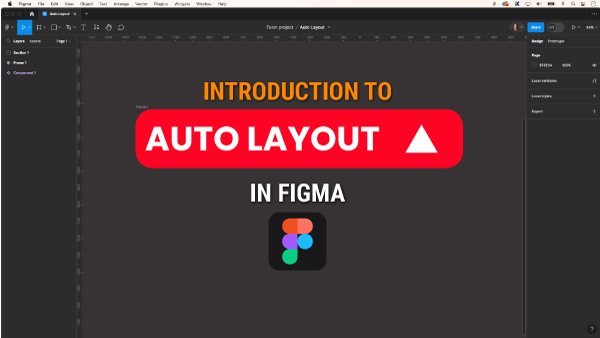In this introduction tutorial, we delve into the intricacies of Figma’s Auto Layout, a feature that revolutionizes the design process by seamlessly adapting to diverse screen sizes and content modifications.
Auto Layout in Figma: A Step-by-Step Guide
- Create Frames:
Start the process by creating a frame to include your design elements, such as buttons or navigation bars.
This step is pivotal for organizing and structuring your layout effectively. - Select Elements:
Ensure that the elements intended for Auto Layout are selected and positioned within the frame.
Apply Auto Layout by using either the keyboard shortcut Shift A or by clicking the + icon in the Control Panel. - Keyboard Shortcuts or Control Panel:
Familiarize yourself with the efficient keyboard shortcut Shift A or
utilize the Control Panel by clicking on the + for swift Auto Layout application, streamlining your workflow. - Adjust Settings: Upon applying Auto Layout, a range of handles and options become available.
Change the layout to your specs by changing the settings such as direction (horizontal or vertical), spacing, and padding.
The auto layout panel offers precise control over object alignment, allowing for a nuanced design approach. - Experiment with Corner Radius:
Explore the versatility of Auto Layout by experimenting with corner radius adjustments, facilitating seamless transitions between vertical, horizontal, and wrap layouts. - Adding Text to our Text Box: Witness the transformative effects as we introduce additional text to exemplify the dynamic capabilities of Auto Layout.
This tutorial serves as a fundamental introduction to harnessing the power of Auto Layout in Figma. Stay tuned for our upcoming video and blog post, where we will demonstrate the creation of an accordion-style menu utilizing the advanced features of Auto Layout.
Come and watch the tutorial if you would rather watch versus reading!
